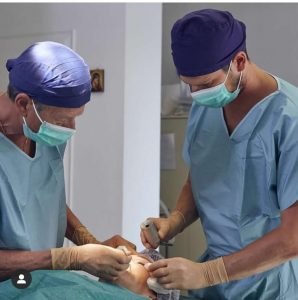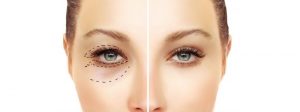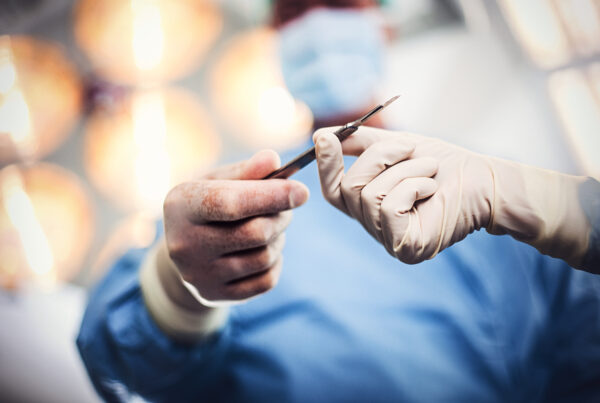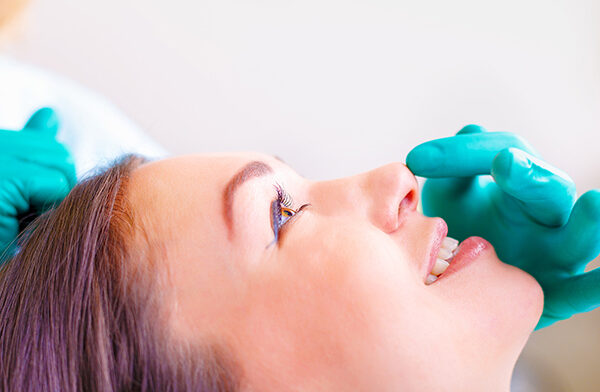Blepharoplasty surgery (from the Greek βλέϕαρον: eyelid) is the intervention that improves the appearance of the peri-ocular area.

Dr Diego and Cesare Cappellina are both plastic surgeons. They work in Vicenza
What are the indications for blepharoplasty surgery?
Blepharoplasty surgery is recommended in case of:
-eye bags, due to periorbital adipose accumulation
-drooping eyes, drooping shape of the eyelids, which gives a sad and tired look
-excess skin above the eyes covering the eyelid crease
-dark circles and periorbital skin depression
-crow’s feet and sagging skin
-eyelid swellings that often cause small and annoying ailments, such as redness, tearing or narrowing of the visual field
What kind of surgery is it?
The intervention may consist in the removal of excess skin only, or extend to the reduction or repositioning of the fat bags.
The classic operation of upper blepharoplasty involves an incision, conducted in such a way as to make the scar fall into the natural crease of the eyelids and make it, in fact, invisible. Excess skin is removed. Depending on the case, removal of fat bags may be indicated. After careful hemostasis, suture with fine stitches and dressing are carried out.
The effects of time on the lower part of the eye instead favor the formation of bags: with the intervention of lower blepharoplasty these excess adipose and / or possible excesses of the skin are eliminated, through an incision performed about 1 mm from the ciliary margin, externally or through an internal, transconjunctival incision.

pre /post op after upper blepharoplasty

per /post after upper and inferior blepharoplasty
How is blepharoplasty surgery performed?
Blepharoplasty surgery can be practiced on the upper, lower eyelid or both (complete blepharoplasty). The incisions and subsequent scars are positioned on the upper eyelid (at the level of the eyelid crease) and sometimes they can protrude a few millimeters from the orbital arch.
At the level of the lower eyelid the scars are located a few millimeters from the lower ciliary margin.
The surgeon separates the skin tissue from the fat and muscle tissue, eliminating excess portions, as in the case of bags under the eyes.
The sutures are practiced in such a way as to make the scars appear minimal, which however will match the natural folds of the upper eyelids and, for the lower blepharoplasty, they will be located just below the eyelid line.
Blepharoplasty surgery is practiced under local anesthesia, generally in combination with intravenous sedation, so as not to be completely alert during the operation.The surgery lasts from 20 minutes to 2 hours depending on the complexity and whether it is upper, lower or complete blepharoplasty (super-lower blepharoplasty).

the correction may involve the upper , inferior or both eyelids
What are the behavioral rules for proper healing?
proper eye hygiene
use of cold or ice tablets
use of eye drops
keep your head raised and sleep with two pillows for at least a week
do not strain your eyesight (television, reading, etc.)
avoid alcohol
contact lenses until complete healing
preferably go out with dark glasses
do not expose yourself to the sun
What kind of anesthesia do we use in blepharoplasty surgery?
The surgery can be performed under local anesthesia with sedation, in our surgery, if the problem affects only the upper eyelid, or in general anesthesia, if it also involves the lower eyelid.
According to the individual cases and preferences, the surgery can be performed on an outpatient basis for upper blepharoplasty, under normal conditions
day hospital recovery hospitalization is indicated if upper blepharoplasty surgery is associated with lower blepharoplasty.
How long does the intervention last?
we perform this surgery at our clinic.
the operation is about 45 minutes if it affects only the upper eyelids, about 2 hours hours if also performed on the lower eyelids.
What is the post-operative course?
After surgery, tablets soaked in saline or a dressing with patches are applied. At home, the patient will have to perform frequent applications of cold tablets, in order to reduce edema (swelling).
It is also advisable to rest with the head raised on two pillows for 2 or 3 nights. Surgical wound healing occurs quickly.
Sutures are usually removed on the third-fifth day after surgery.
Post-operative pain (most often in the form of burning) is usually well controlled by common analgesics.
Work can also be resumed early, in about 6/7 days.
Sports should be avoided for about two weeks.
Are there non-surgical alternatives?
The so-called crow’s feet wrinkles also form around the eyes, between the outer edge of the eye and the temple, giving the look a tired look.
In this case, botulinum, a substance that smoothes wrinkles, can be used. Botulinum injections are effective, safe and give results already after a few days up to 7 months. The effect is completely reversible. The botulinum is effective also in the horizontal wrinkles of the forehead and in the vertical ones above the nose which give a curly look to the eye.
An equally effective alternative, although less suitable, is the use of hyaluronic acid fillers.

the surgery is in the centre of Vicenza, in Viale Roma 21, near the train Station


